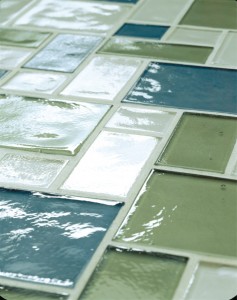5 Things You Never Knew About Grout
These facts will help prevent grout from becoming an afterthought in your tiling project.
 Starting a tiling project? While you will certainly want to learn all about the considerations for choosing wall or floor tile, don’t neglect to also learn about grout. Here are 5 facts to get you started.
Starting a tiling project? While you will certainly want to learn all about the considerations for choosing wall or floor tile, don’t neglect to also learn about grout. Here are 5 facts to get you started.
Grout Can Be an Important Design Element
All too often, people tend to spend a lot of time and effort finding the perfect tile and leave their grout choice as an afterthought. But the reality is that the grout you use can have a big impact on your design. For example, you might choose grout in a contrasting color to help really show off an unusual tile layout pattern. In other situations you might want to choose a grout that blends in with the tile to help hide the grout lines.
You Can Customize Your Grout Color
There are actually many more possibilities for your grout color than just shades of white, beige, and other neutrals. Some manufacturers actually have 30+ standard colors in their catalogue, and you can actually customize the color even further buy mixing a color additive into a pre-colored grout. If you go this route, be sure to measure out how much additive you are using so you can produce the color consistently.
You Can Change Grout Colors Without Relaying the Tile
If you decide you don’t like your grout color, or if your grout has become stained or dirty, you can actually change the color without having to tear out the tile or attempt the messy process of laying new grout over the existing grout. Simply buy some grout colorant, which is a waterborne epoxy you can apply to your grout lines neatly and easily using a small brush. Different size brushes are available to suit different sizes of tile seams. Typically, the best results are seen when you choose a colorant in a darker shade than the original grout.
Grout Choice Can Make or Break a Vintage Look
At Mission Tile West, we offer a variety of different lines of vintage tile perfect for recreating an authentic look in historic properties dating as far back as the 1920s. However, it is important to remember that vintage tile just won’t look quite right if you do not also create a vintage grout line. For example, in the 1920s and 1930s, extremely tight “string grout” well under 1/8 inch wide was standard. Using a larger grout line for a design from this era will pretty much defeat the purpose of choosing a vintage tile as you will not get the authentic look you want.
Some Grout Could Actually Damage Your Tile
Grout comes in sanded and non-sanded varieties. Sanded grout is the most likely to be used for your average tile project. The sand supplies the strength and bulk needed to fill larger grout lines over 1/8 of an inch wide. It also cuts down on the polymer content of the product, which makes it less expensive than non-sanded grout. Unfortunately, for grout lines less than 1/8 of an inch wide, sanded grout will not compact properly and more expense non-sanded grout must be used.
If you are doing a project with a delicate type of tile that is vulnerable to abrasion, you need to be very careful when using sanded grout, as it is possible for the rough sand in the grout to scratch your tile.
